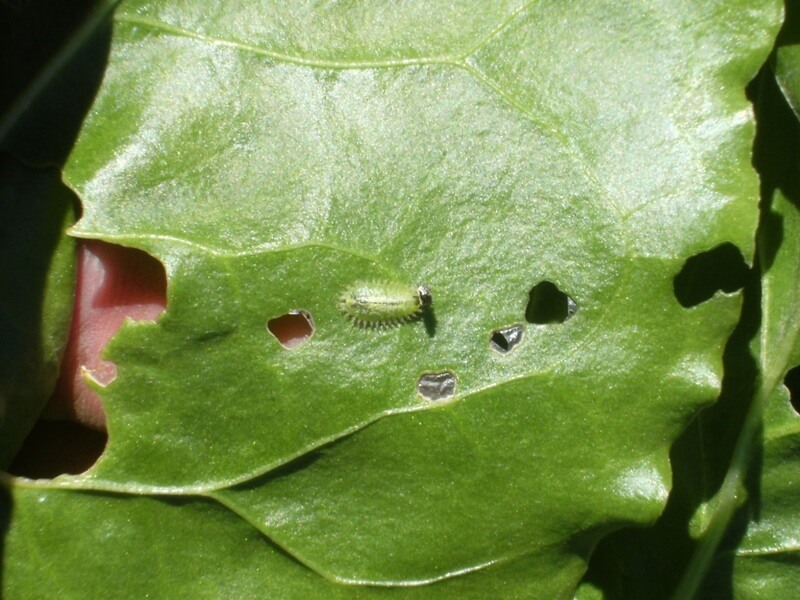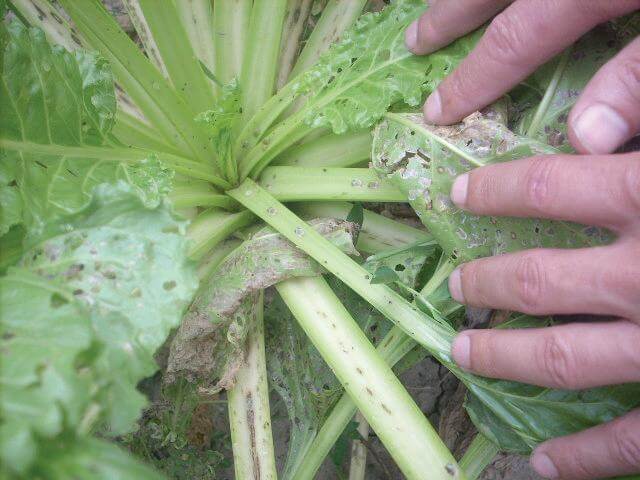
Remolacha de mesa
How to recognize and combat cassida on table beets
Cassida
Insect
Type:
Risk to the plant:
HIGH
Cassida Vittata
Pathogen:

Escarabajos
WHO CAUSES IT?
Cassida vittata is a beetle belonging to the family Chrysomelidae, commonly known as cassid. This insect has a flattened, oval-shaped body, with a length that varies between 5 and 7 millimeters. Adults are bright green and have a pronotal shield that covers much of the body, including the legs and head. During the warm months, females lay their eggs on the underside of table beet leaves. After an incubation period, the larvae emerge and begin to feed on leaf tissue. These larvae have a spiny, yellowish body, and go through several stages before pupating. Pupation occurs in the soil or on leaves, where the larvae transform into adults. Depending on environmental conditions, there may be several generations per year, especially in hot climates.
SYMPTOMS
In table beets, infestation by Cassida vittata produces a disease known as cassid. Damage is caused by both adults and larvae, who feed on leaf tissue, creating necrotic areas that interfere with photosynthesis and normal plant growth.
- Presence of irregular holes in the leaves.
- Transparent areas on the leaves due to the removal of the parenchyma.
- Withered and discolored leaves.
- Reduction in the effective leaf surface for photosynthesis.
- Weakened plants and lower root yield.
- Visible presence of adults and larvae on the underside of the leaves.



DEVELOPMENT CONDITIONS
Temperature:
20-30°C
Humidity:
50-70%
HOW IS IT SPREAD?
Wind, Soil movement, Cultivation tools, Infested plants, Plant transport, Direct contact
HOW TO ELIMINATE IT?
Home treatments
There are no home treatments
Natural allies
Chemical treatments
There are no treatments for this disease. Treatments are directed at the insect vectors that transmit it. See insect treatments.
RECOMMENDED PRODUCTS TO ELIMINATE THE PEST
Sponsored link
Sponsored link
Sponsored link
Sponsored link
Sponsored link
Sponsored link
Sponsored link
Sponsored link
Sponsored link
Effective against all types of fungi
Sponsored link
Sponsored link
Sponsored link
Sponsored link
Sponsored link
Sponsored link
Sponsored link
REPELLENT PLANTS
RECOMMENDATIONS
















































